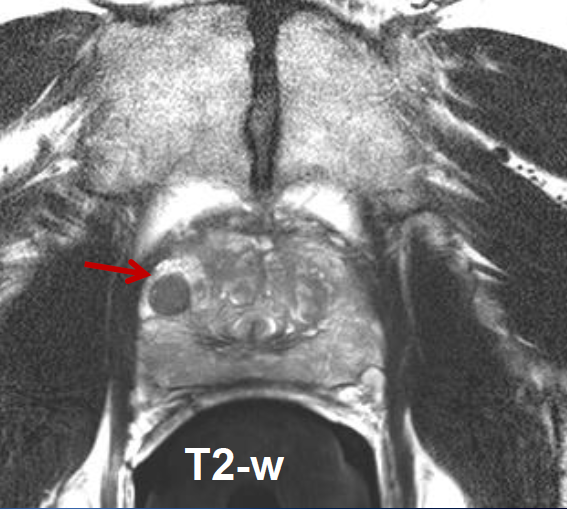
September 15, 2014 — Prostate cancer patients who received hypofractionated (HPFX) radiation therapy (RT) reported that their quality of life, as well as bladder and bowel function, were at similar levels before and after RT, according to research presented at the American Society for Radiation Oncology’s (ASTRO’s) 56th Annual Meeting. Additionally, results indicate that parallel quality of life outcomes occurred between groups of patients who receive different regimens of HPFX RT.
The phase I/II clinical trial enrolled 343 patients with low-to-intermediate risk prostate cancer at five institutions from 2002 to 2010 to study the effectiveness of HPFX RT, as well as the patients’ ability to tolerate the treatment. HPFX RT is radiation therapy in which the total dose of radiation is divided into large doses and administered over a shorter period of time (fewer days or weeks) than standard RT.
All of the patients received intensity-modulated radiation therapy (IMRT) to the prostate and base of the seminal vesicles. IMRT is an advanced high-precision RT that uses guided imaging techniques to deliver well-defined radiation doses to a tumor or specific areas within the tumor. IMRT allows for the radiation dose to conform more precisely to the three-dimensional shape of a tumor while minimizing radiation to surrounding tissues.
Patients were divided into three groups based on dose-per-fraction schedules (the amount of radiation administered during each RT session). Researchers calculated and designed the three different HPFX regimens in hopes that each might achieve similar disease control and consistently minimal side effects for patients. Group One’s HPFX levels were 64.7 Gy total, with 22 fractions (doses) of 2.94 Gy each. Group Two’s HPFX levels were 58.08 Gy total, with 16 fractions (doses) of 3.63 Gy each. Group Three’s HPFX levels were 51.6 Gy total with 12 fractions (doses) of 4.3 Gy each.
Researchers evaluated the impact each treatment regimen had on the quality of life of patients, and all patients completed three quality-of-life (QOL) questionnaires at baseline and annually for up to three years post-treatment. Patient assessments measured bladder, bowel and sexual function, and included the Fox Chase Bowel/Bladder Toxicity questionnaire, the Spitzer Quality of Life Index (SQLI) questionnaire and the International Index of Erectile Function (IIEF) questionnaire.
Analysis of patient-scored QOL bowel data at three years post-treatment revealed no significant difference in average pre- to post-treatment score changes. Additionally, there was little difference in composite QOL outcomes across the three groups. Out of a maximum score of 100, the scores were 86.3 for Group One; 87.7 for Group Two; and, and 85.4 for Group Three (p=0.469). Similarly, QOL data regarding bladder function at three years follow-up was comparable across the three groups. Out of a maximum score of 100, the scores were 79.5 for Group One; 82.5 for Group Two and 81.1 for Group Three (p=0.343).
The SQLI data, which has a range of 0-10, revealed excellent, similar three-year mean scores of 9.5 for Group One; 9.8 for Group Two and 9.5 for Group Three (p=0.188). IIEF data on sexual function also revealed no significant difference across HPFX levels at three years post-treatment when assessing erectile function (p=0.07), orgasmic function (p=0.078), sexual desire (p=0.231), intercourse satisfaction (p=0.354) and overall satisfaction (p=0.191). All measures except intercourse satisfaction were significantly worse at three years when compared to baseline for all three treatment groups.
“These results will significantly contribute to the continued understanding of hypofractionation in the setting of prostate cancer,” said lead author Jeffrey V. Brower M.D., Ph.D., a radiation oncology resident at the University of Wisconsin Hospital and Clinics. “We were pleased by the overall minimal changes from baseline noted in the study participants following hypofractionated radiation. The findings of non-statistically significant differences noted when comparing hypofractionation regimens was as anticipated, as much work was done to calculate ‘equivalent’ doses and to predict late toxicities. Specifically, with regard to patient-reported quality of life outcomes, our research can assist in a continued paradigm shift concerning the role of hypofractionation in the treatment of prostate cancer, resulting in shorter treatment times and improved quality of life for our patients.”
For more information: www.astro.com


 April 04, 2024
April 04, 2024 








